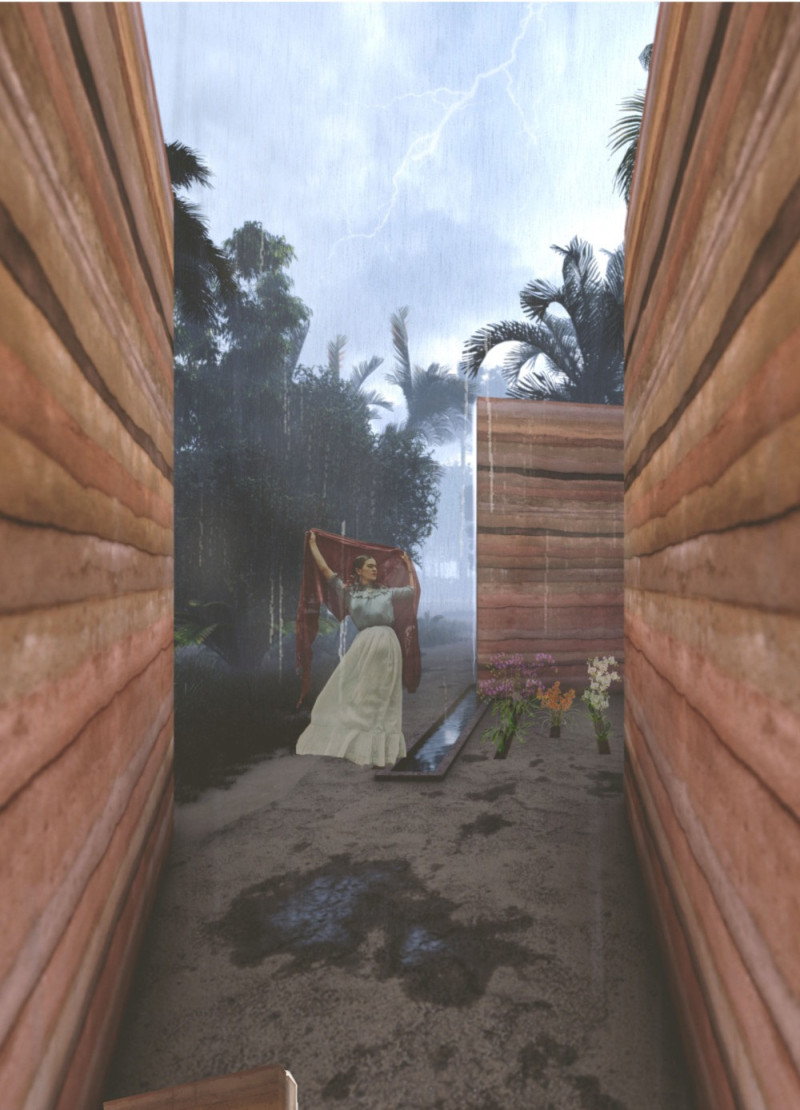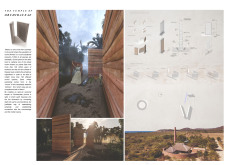5 key facts about this project
The main function of the Temple is to provide an open-air sanctuary for visitors, allowing them to engage with the environment while honoring the botanical heritage of the area. The design encourages interaction with both the flora and the structural elements, fostering a deep connection with the natural world.
The project's layout is characterized by organic forms that mirror the growth patterns of orchids. Visitors enter through a corridor formed by earthen walls, which emphasize the use of natural materials that resonate with the site’s topography. The careful orchestration of space and light is essential to the design, as strategically placed openings allow natural illumination, enhancing the overall atmosphere.
A key component of the project lies in its material choices. The primary materials include earth, wood, concrete, and glass. Earth serves as the foundation for the structure, reinforcing its connection to the land. Wood elements add warmth and a tactile quality, while concrete offers resilience. The selective use of glass fosters transparency, integrating indoor and outdoor environments and allowing views of the surrounding landscape.
What differentiates the Temple of Orchidaceae from other architectural projects is its focus on organic architecture. The design departs from conventional rigid structures and embraces fluidity. The arrangement of spaces allows for unstructured movement and interaction, creating a continuous dialogue between visitors and their environment. By mimicking the natural forms of orchids, the architecture invites exploration and engagement, encouraging a personal connection to the site.
Attention to detail is apparent throughout the architectural design. The thoughtful configuration of interior spaces provides areas for both solitude and communal gathering. The interplay between materials results in varying textures that enhance the sensory experience of visitors, moving beyond a traditional architectural form to evoke a deep sense of place.
Interested readers are encouraged to explore the project presentation for a comprehensive understanding of this architectural design. Detailed architectural plans, sections, and design ideas can provide further insights into the unique approaches and elements that define the Temple of Orchidaceae.























